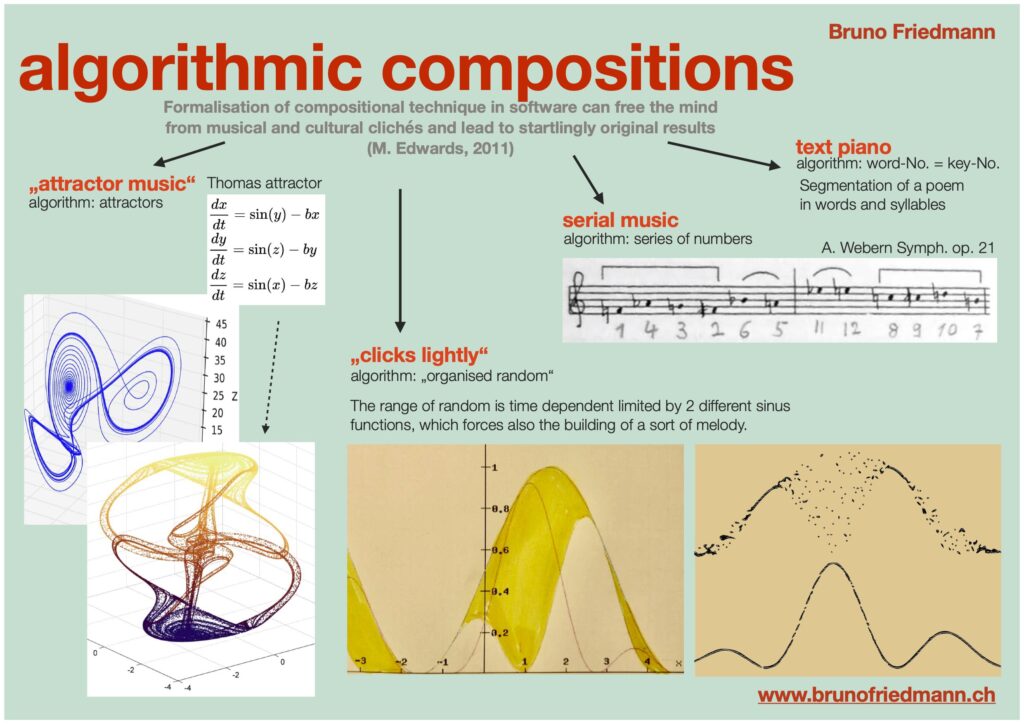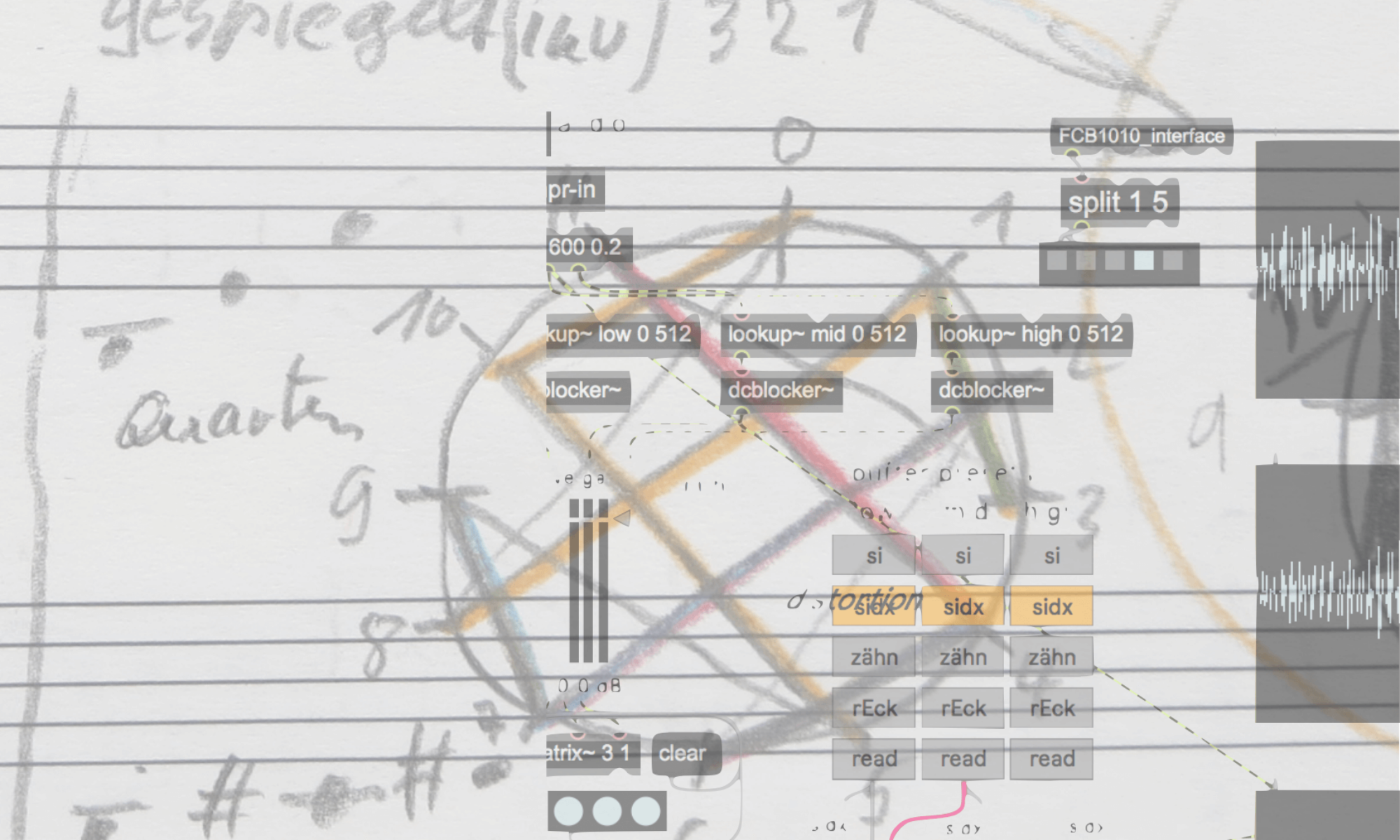Project, presented at the «ateliers ouvertes», 10/11 october 2020 at Le Séchoir.

Algorithmic composing is actually as old as music is. Nearly every music is made according to certain rules, design ideas, psycho-acoustical awareness› or social expectations one can summarise as algorithms. With computers their importance and their power arises dramatically. Complex algorithms can be included in musical compositions, making them more substantial and rich of new elements and frees also the mind from basic works, clichés and and practical limitations (References and readings).
Serial Music
The most famous musical algorithm, which peaks 70 years ago is the twelve-tone music and serialisation with its basic series of numbers and a few rules for use (see entire project «Extended Total Serialism, ETS»). Between this determined algorithm and the randomly induced compositions, there is a big area and lots of playgrounds to get advantages for composing.
See videoClip of «Amazonas21 träge«, on site «Music and pieces with serialized fms«
Attractor Music
An attractor is a set of numerical values toward which a system tends to evolve, for a wide variety of starting conditions of the system (see wikipedia). There are lots of famous ones, which produce wonderful two or three dimensional graphics; the Lorenz, Rössler, Thomas, Clifford, and many more attractors (e. g.: http://paulbourke.net/fractals/, or attractors animated. ) How to transform the time variant course of the attractors into time variant and ephemeral sound?
Here is a short example, how the Lorenz attractor may sound:
see project «Attractor Music«
A spatialised composition with 4 attractors is «L’océan du son» by Bruno Friedmann (2020).
Constraint Random
Many resonating clicks were organised in time by using an algorithm with random values, time dependent constraint by two sine curves: «clicks lightly«. Point of interest: Does randomly generated sound can have something like a musical dynamic?

